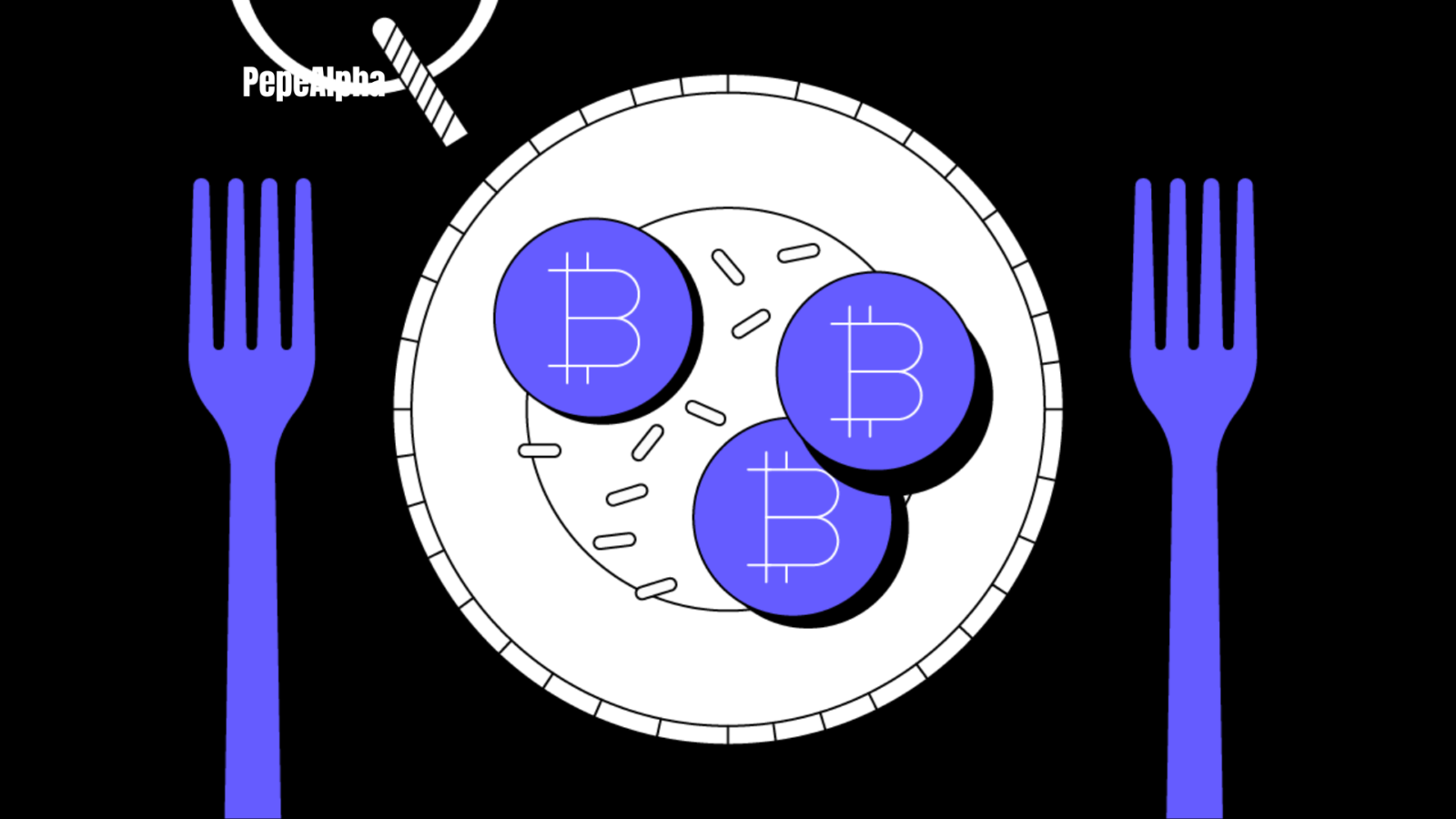Hey frens, it’s your boy Pepe here, and today we’re diving into a real head-scratcher: Beyond the Original: A Look at Bitcoin Forks, Let’s hop right into it!
Bitcoin forks can introduce innovative features to the network, but they also hold the risk of fracturing the entire user base. Even seemingly minor changes, like a block size increase, can trigger significant consequences for both the network’s stability and Bitcoin’s long-term value. Understanding the different types of forks and their historical context is crucial to navigate the cryptocurrency landscape and avoid potential pitfalls.
Bitcoin Forks: Updates or Upheaval?
Imagine a highway with clear rules for traffic flow. A Bitcoin fork is like a planned detour on that highway. The underlying code that governs the Bitcoin network is modified, creating a new set of rules for a branch of the network. These changes impact all participants (nodes) and the blockchain itself.
Forks are a common occurrence in software development, and cryptocurrencies are no exception. In fact, forks play a vital role in how Bitcoin Core, the software powering most Bitcoin nodes, receives upgrades and maintenance. However, the potential consequences of forks can be controversial. Minor tweaks, like increasing the block size, can spark heated debates within the Bitcoin community due to the potential impact on network stability and Bitcoin’s long-term value. Understanding different types of forks and their historical context is crucial for navigating the ever-evolving cryptocurrency landscape.
Soft Fork vs. Hard Fork: Navigating Changes on the Bitcoin Network
The Bitcoin network undergoes updates through forks, but there are two main types with distinct implications:
- Soft Fork: These are tweaks to the code that maintain compatibility with older versions. Nodes running the previous code can still validate transactions on the updated network. Think of it as a minor traffic lane adjustment on a highway – everyone can still navigate the road.
- Hard Fork: These are significant code changes that render older versions incompatible. This creates a completely new blockchain, requiring nodes to upgrade to the new code to interact with it. Imagine a major highway reconstruction – those using the old route have to find a detour.
Reaching consensus for changes on a decentralized network like Bitcoin can be challenging. Hard forks, typically proposed for substantial benefits, require a strong majority of nodes to upgrade. This ensures a smooth transition and minimizes disruption.
A History of Bitcoin Forks: Evolution or Discord?
Since Bitcoin’s inception, developers have proposed numerous hard forks to address perceived limitations or introduce new features. Some aimed to fix bugs or improve scalability (e.g., BIP-0050, CVE-2018-17144), while others sought more fundamental changes (e.g., Bitcoin Cash, Bitcoin Gold).
However, most hard forks haven’t gained widespread adoption. Examples include Bitcoin XT, Bitcoin Classic, and Bitcoin Private. These attempts highlight the challenge of reaching consensus within a decentralized network. Successful forks require strong community support and a clear value proposition.
This historical context helps us understand the dynamics at play when considering future Bitcoin protocol changes.
Bitcoin XT: The Spark That Ignited the Blocksize Wars
In 2014, Bitcoin XT emerged as the first significant hard fork proposal for Bitcoin. Developed by Mike Hearn, it aimed to introduce several features, with the most hotly debated being an increase in the block size limit. Originally set at 1 MB by Satoshi Nakamoto, Hearn proposed raising it to 8 MB to handle more transactions per second.
This proposal ignited a heated debate within the Bitcoin community, now known as the Blocksize Wars. While faster transactions were desirable, concerns arose about the long-term impact on network security and decentralization.
Here’s why:
- Blockchain Size and Storage: Bitcoin’s entire transaction history (blockchain) needs to be downloaded and stored by full nodes. Increasing the block size inherently increases the blockchain size.
- Decentralization and Accessibility: Running a full node becomes more expensive and resource-intensive with larger block sizes. This could lead to fewer nodes being operated, potentially compromising network decentralization and security.
For instance, a 128 MB block size could inflate the blockchain by a staggering 6.5 TB per year! This significant growth could deter users from running full nodes, hindering the network’s overall health.
Bitcoin XT ultimately didn’t gain widespread adoption, but it sparked a critical discussion about Bitcoin’s scalability that continues to this day.
Bitcoin Classic: A Modest Fork with Limited Impact
Following Bitcoin XT’s decline in 2014, another hard fork attempt emerged in 2016: Bitcoin Classic. This proposal advocated for a smaller block size increase, from 1 MB to 2 MB. However, despite being a more moderate change, Bitcoin Classic failed to gain significant traction within the community and remains a niche project.
Bitcoin Cash and Bitcoin SV: A Forked Path
The Bitcoin Cash (BCH) hard fork in 2017 emerged from disagreements about Bitcoin’s scalability. BCH itself increased the block size limit to handle more transactions.
Bitcoin SV (BSV) took this concept further in 2018. Created by Craig Wright, BSV aimed to be the “Satoshi Vision” of Bitcoin, adhering more closely to the original whitepaper’s ideas. The primary difference lies in significantly larger block sizes on BSV compared to both Bitcoin and Bitcoin Cash.
However, the claim of BSV adhering strictly to Satoshi’s vision is a point of contention within the cryptocurrency community.
| Bitcoin | Bitcoin Cash | Bitcoin SV | |
| Purpose | Trustless Money | Trustless Money | Trustless Money |
| Symbol | BTC | BCH | BSV |
| Launched | Jan-2009 | Aug-2017 | Nov-2018 |
| Consensus | Proof-of-Work (SHA-256) | Proof-of-Work (SHA-256) | Proof-of-Work (SHA-256) |
| Block Size | 1 MB -> 4 MB | 8 MB -> 32 MB | 128 MB -> 2 GB -> Infinite |
| Creators | Satoshi Nakamoto | Developers | Craig Wright, Calvin Ayre |
| Block Time | 10 min | 10 min | 10 min |
| Transactions | 7/sec | 116/sec | 50,000/sec |
| Supply | 21 Million BTC | 21 Million BTC | 21 Million BSV |
Bitcoin Gold: A Different Approach to Mining
In the wake of Bitcoin Cash, Bitcoin Gold (BTG) emerged as another hard fork in October 2017. Unlike its predecessors focused on block size increases, Bitcoin Gold aimed to democratize mining.
- ASIC Resistance: Bitcoin Gold altered its Proof-of-Work algorithm to make mining less favorable for specialized ASIC hardware (machines specifically designed for Bitcoin mining). This aimed to encourage the use of consumer-grade GPUs (graphics cards) for mining, promoting a more decentralized mining landscape.
- Development Fund: The fork also introduced a one-time increase of 100,000 BTG coins to fund the network’s ongoing development.
– Forks: Updates on the Bitcoin Highway - The word “fork” might sound complex, but it simply refers to software updates. Just like updating your phone apps, Bitcoin occasionally undergoes changes to improve its functionality.
- Things get a bit more interesting with Bitcoin because it’s a decentralized network – no single entity controls it. This means upgrades require careful consideration and community consensus. This deliberative approach, while seemingly slow, helps ensure the stability and security of the entire network.
- Understanding Bitcoin forks and the Bitcoin Improvement Proposal (BIP) system behind updates is valuable for anyone interested in Bitcoin. By staying informed, you can navigate future changes with confidence!
Bitcoin Forks: Your Questions Answered
- What was the first major Bitcoin hard fork?
The first major Bitcoin hard fork was Bitcoin XT in 2014. It proposed increasing the block size limit to handle more transactions.
- How many times has Bitcoin been forked?
Bitcoin has undergone numerous soft forks and hard forks. Soft forks are generally well-received and integrated, while only two hard forks have achieved widespread adoption: BIP-0050 in March 2013 and CVE-2018-17144 in September 2018.
- Is a hard fork good or bad?
The impact of a hard fork depends on the proposed changes. Major changes can cause disruption and confusion within the community, potentially affecting the cryptocurrency’s price. However, successful hard forks can introduce valuable improvements to the network.
- When did Bitcoin fork?
The Bitcoin network has a history of soft forks. The two successful hard forks occurred in:
- March 2013 (BIP-0050)
- September 2018 (CVE-2018-17144)












Leave a Reply